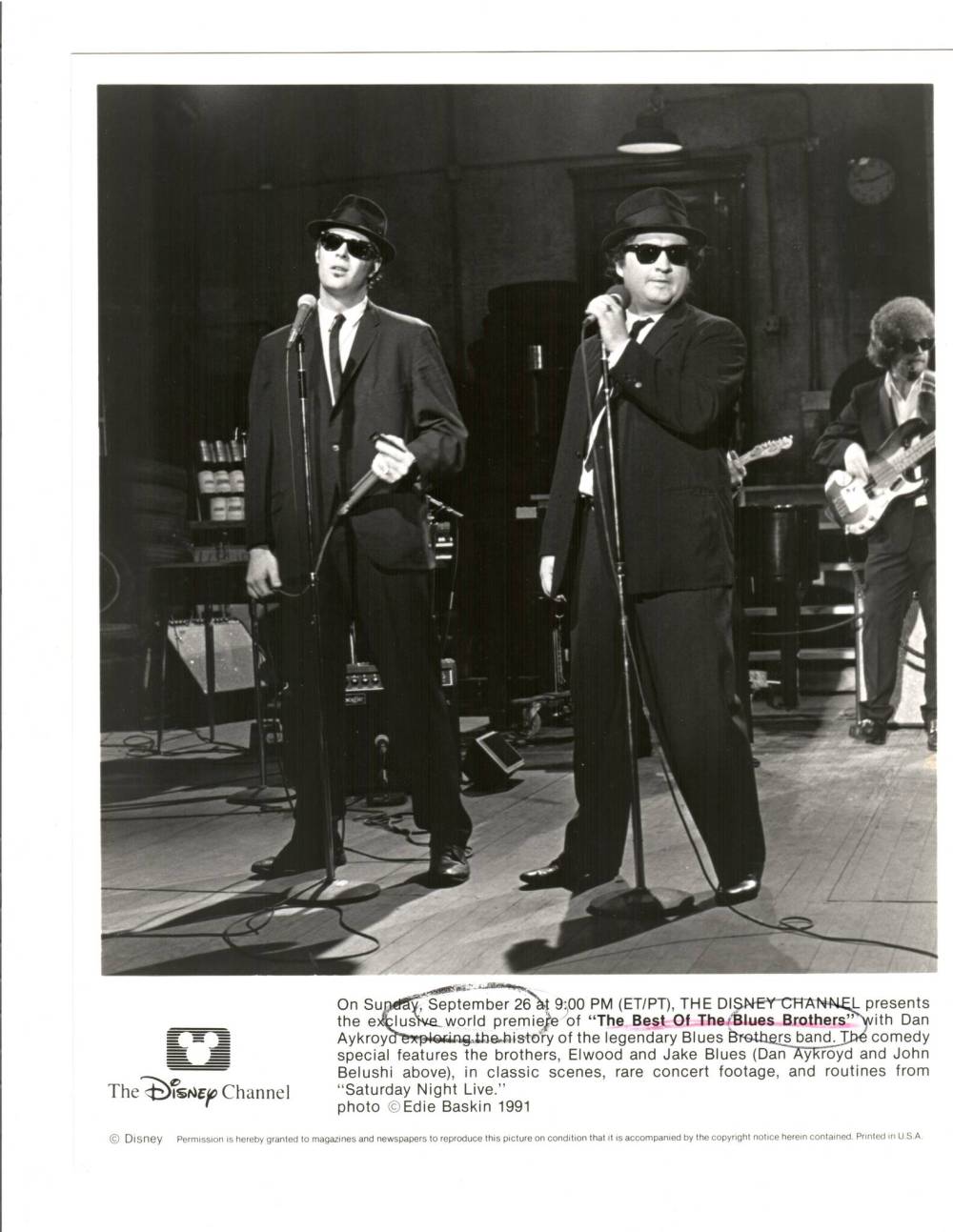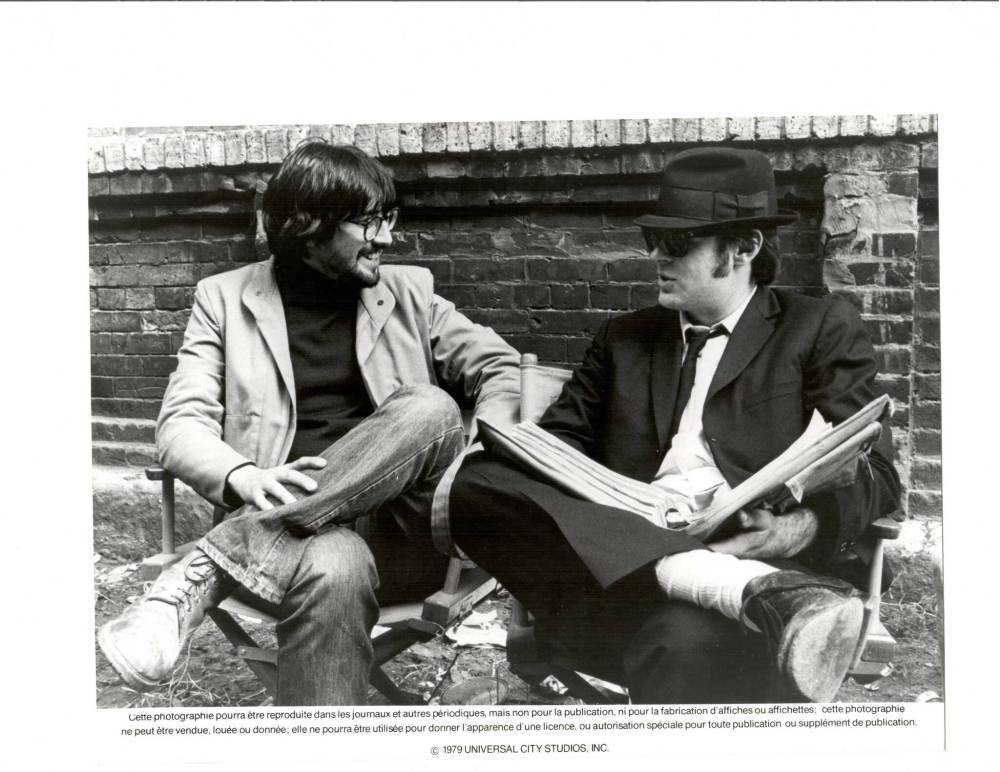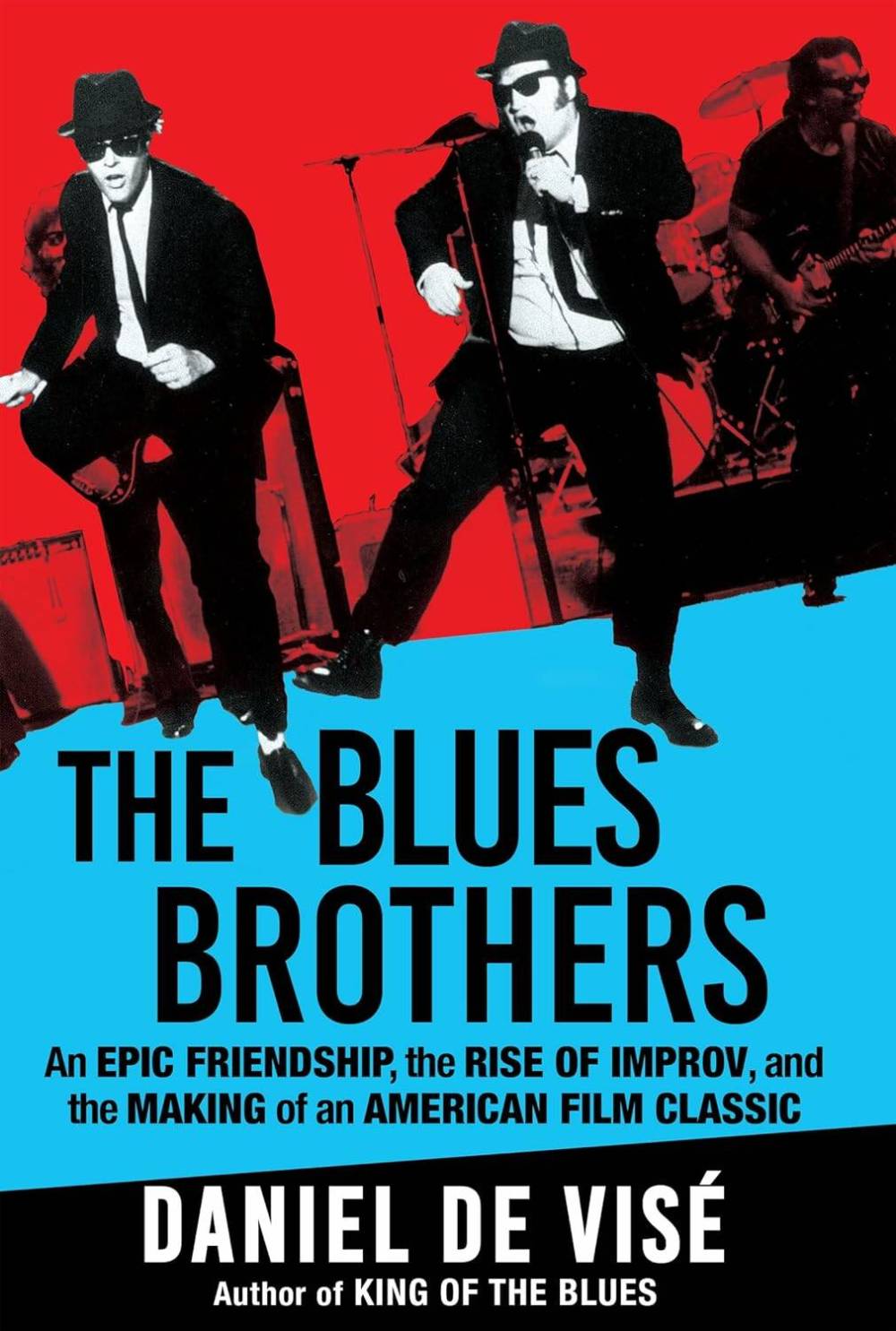Soul men Blues Brothers’ raucous romp from comedy clubs to the silver screen chronicled in entertaining account
Read this article for free:
or
Already have an account? Log in here »
To continue reading, please subscribe:
Monthly Digital Subscription
$19 $0 for the first 4 weeks*
- Enjoy unlimited reading on winnipegfreepress.com
- Read the E-Edition, our digital replica newspaper
- Access News Break, our award-winning app
- Play interactive puzzles
*No charge for 4 weeks then billed as $19 every four weeks (new subscribers and qualified returning subscribers only). Cancel anytime.
Read unlimited articles for free today:
or
Already have an account? Log in here »

“It’s 106 miles to Chicago, we got a full tank of gas, half a pack of cigarettes, it’s dark and we’re wearing sunglasses.”
“Hit it.”
It made little sense when, on April 22, 1978, two of the most popular comedians on television ditched the gags that made them famous, gussied themselves up in black suits and ties and sang the blues to fill three minutes of airtime.
When John Belushi and Dan Aykroyd strutted on the Saturday Night Live stage as Jake and Elwood Blues, it would have been difficult to imagine the vanity project would grow into a budget-busting, action-musical farce released to mixed reviews yet so highly regarded it’s become part of the Library of Congress’s National Film Registry.
Book review
The Blues Brothers: An Epic Friendship, the Rise of Improv, and the Making of an American Film Classic
- By Daniel De Visé
- Atlantic Monthly Press, 400 pages, $43
Author Daniel de Visé begins his own mission-from-God Blues Brothers biography by going back to the beginning of this unusual musical and cinematic journey.
That means going to the Chicago suburbs, where Belushi, the son of Albanian immigrants, showed an insatiable appetite for being the centre of attention, whether it was his high school’s football team or when he chewed up Chicago’s theatre scene.
It also means exploring Aykroyd’s early days in Ottawa, where he overcame Tourette syndrome and strict Catholic boarding schools — the Penguin character in the John Landis-directed The Blues Brothers movie is pulled directly from his youth — and picked up an encyclopedic knowledge of military equipment, police and the blues along the way.
De Visé, a Pulitzer Prize-winning journalist with the Washington Post and Miami Herald who has written bios on B.B. King and another famous comedy partnership — Andy Griffith and Don Knotts — follows Belushi and Aykroyd through the Second City improv troupe, one outrageous sketch and drug-and-alcohol fuelled off-stage antic at a time.
Second City is where Belushi meets Harold Ramis and Joe Flaherty in Chicago, and how Aykroyd encounters Gilda Radner in Toronto. The stacks of legendary names de Visé drops builds the bio’s beat after a slow beginning and in so doing, reveals how the next five decades of comedy on TV and film were created.
The cost of building that comedic mountain was dear. Belushi’s appetites for excess metastasized when he arrived at Studio 8H of New York’s Rockefeller Plaza. That’s where NBC launched a new TV project called Saturday Night in 1975 and put an unknown quantity named Lorne Michaels in charge to herd his comedic cats, who were addicted to laughs and cocaine, not always in that order.

That meant both in large quantities for Belushi. Watergate journalist Bob Woodward revealed much of the excess in Wired, his 1984 investigation of Belushi’s drug-overdose death in 1982, but de Visé adds context: Belushi’s rise in fame was so quick, and his penchant for overdoing everything — acting, eating, drinking and drugs — shows a time-bomb ready to blow that his wife Judy, try as she did, was unable to defuse.
De Visé, who began the project after he discovered a stack of bootleg SNL episodes on videotapes in his father’s house, is at his best at the end of each chapter, where he foreshadows the construction of the Blues Brothers concept as well as comedy history.

This style gives the first meeting between Aykroyd and Michaels, years before they would become SNL luminaries, the gravitas it deserves as a key turning point in comedy and pop culture.
It also makes the evening Belushi discovers Aykroyd on a Toronto stage — and begins a friendship laced with vodka, quaaludes and Robert Johnson’s Sweet Home Chicago — as momentous as when teenagers Mick Jagger and Keith Richards met at a train station in Dartford, England.
There’s lots of fun celebrity gossip in The Blues Brothers; the romances and rivalries are juicier than the numerous benders.
However, it’s the nagging what-ifs that remain after Belushi’s death — imagine Ghostbusters with Belushi or a proper Blues Brothers sequel, not the wretched Blues Brothers 2000 bomb — that provide a bittersweet undertone this memoir.
Alan Small is a reporter for the Free Press Arts and Life section, and once dressed as Joliet Jake Blues for a Halloween party.

Alan Small
Reporter
Alan Small has been a journalist at the Free Press for more than 22 years in a variety of roles, the latest being a reporter in the Arts and Life section.


